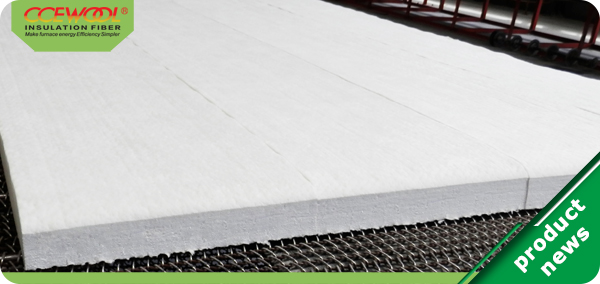Ceramic fibre wool is made by melting high-purity clay clinker, alumina powder, silica powder, chromite sand and other raw materials in an industrial electric furnace at high temperature. Then use compressed air to blow or spinning machine to spin the melted raw material into a fiber shape, and collect the fiber through a fiber wool collector to form ceramic fibre wool. Ceramic fibre wool is a high-efficiency thermal insulation material, which has the characteristics of light weight, high strength, good oxidation resistance, low thermal conductivity, good flexibility, good corrosion resistance, low heat capacity and good sound insulation. The following describes the application of ceramic fibre wool in heating furnace:
(1) Except the chimney, air duct and furnace bottom, ceramic fibre wool blankets or ceramic fibre wool modules can be used for any other parts of the heating furnace.
(2) The ceramic fibre wool blanket used at hot surface should be a needle punched blanket with a thickness of at least 25mm and a density of 128kg/m3. When ceramic fiber felt or board is used for the hot surface layer, its thickness should not be less than 3.8cm, and the density should not be less than 240kg/m3. The ceramic fibre wool for the back layer is a needle punched blanket with a bulk density of at least 96kg/m3. The specifications of the ceramic fibre wool felt or board for the hot surface layer: when the temperature of the hot surface is lower than 1095℃, the maximum size is 60cm×60cm; when the temperature of the hot surface exceeds 1095℃, the maximum size is 45cm×45cm.
(3) The service temperature of any layer of ceramic fibre wool should be at least 280℃ higher than the calculated hot surface temperature. The maximum distance of the anchorage to the edge of the hot surface layer ceramic fibre wool blanket should be 7.6cm.
Next issue we will continue to introduce ceramic fibre wool for heating furnace. Please stay tuned.
Post time: Dec-27-2021


